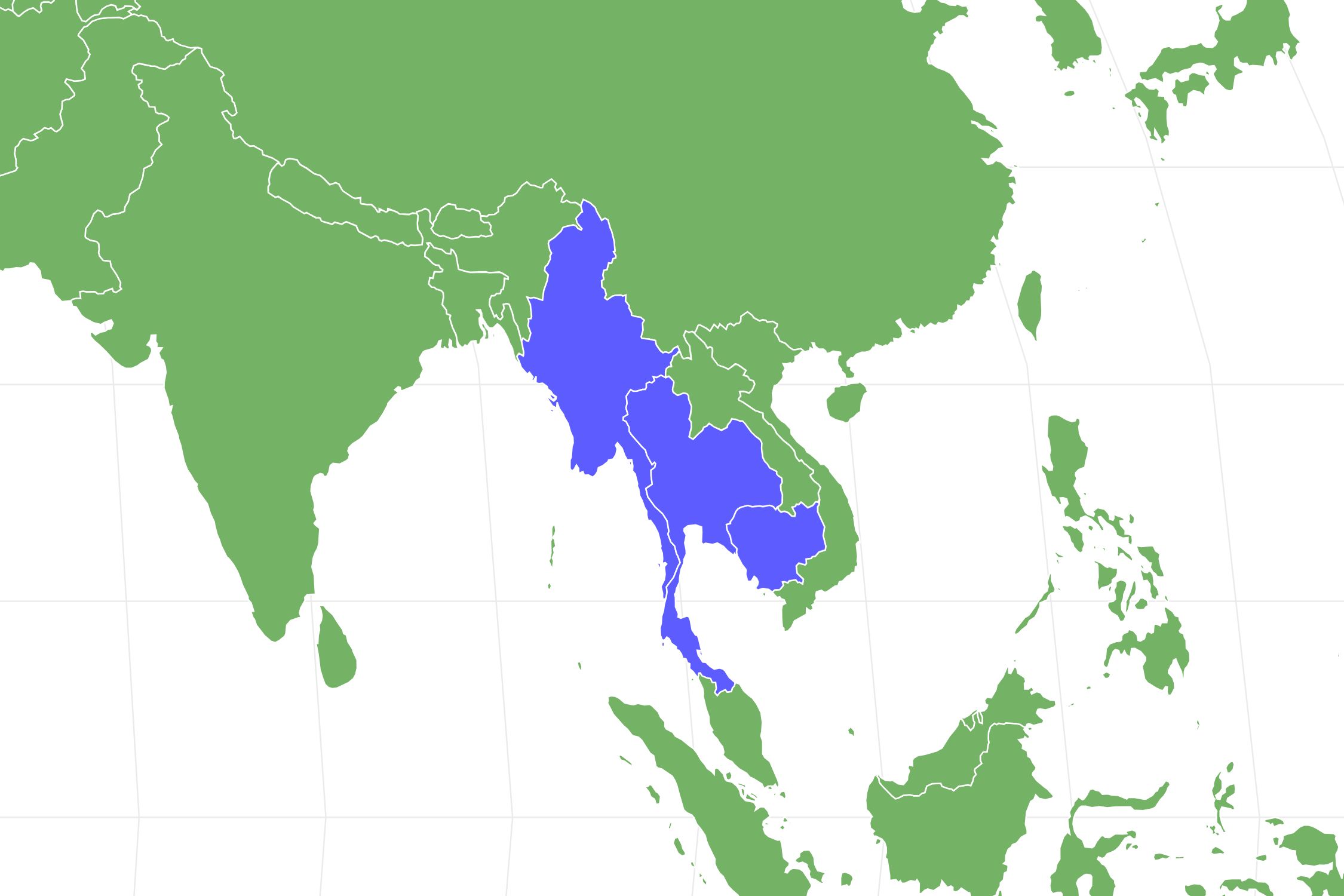Cobalt Blue Tarantula
Cyriopagopus lividus
Cobalt blue tarantulas spend most of their time in self-dug burrows and only emerge when it's time to eat
Advertisement
Cobalt Blue Tarantula Facts
- Prey
- Crickets, cockroaches, baby mice
- Group Behavior
- Solitary
- Fun Fact
- Cobalt blue tarantulas spend most of their time in self-dug burrows and only emerge when it's time to eat
- Biggest Threat
- Deforestation and human capture
- Most Distinctive Feature
- iridescent blue coloration
- Temperament
- Defensive, unpredictable
- Habitat
- Tropical rainforests
- Diet
- Carnivore
- Lifestyle
- Nocturnal
- Favorite Food
- Insects
- Type
- Arachnid
- Common Name
- Cobalt blue tarantula
- Number Of Species
- 1
- Location
- Southeast Asia
Cobalt Blue Tarantula Physical Characteristics
- Color
- Grey
- Blue
- Tan
- Skin Type
- Bristled hairs
- Length
- 5 inches
- Venomous
- Yes
- Aggression
- High
View all of the Cobalt Blue Tarantula images!
Cobalt Blue Tarantula Summary
The stunning cobalt blue tarantula is a favorite hobby pet native to the tropical rainforests of Thailand, Burma, and Myanmar. Its blue iridescent coloring makes it popular for tarantula enthusiasts. However, they are one of the most defensive species and prone to unpredictability. This tarantula is an avid burrower and can be quick to stand its ground. Therefore, it’s not recommended for beginner handlers. Thankfully, the cobalt blue tarantula’s venom is not potent enough to kill a human but it can be very painful. These tarantulas do not like to be touched or handled and even babies are quick to bite.
Keep reading to learn more about the fascinating cobalt blue tarantula!
Cobalt Blue Tarantula Species, Types, and Scientific Name
The scientific name of the cobalt blue tarantula is Cyriopagopus lividus. It belongs to the Theraphosidae family, a group comprised of large hairy spiders known as tarantulas. The Cyriopagopus genus consists of Southeast Asian tarantulas found from Myanmar to the Philippines.
Appearance: How to Identify Cobalt Blue Tarantulas
Cobalt blue tarantulas are medium-sized tarantulas famous for their iridescent blue legs and light gray bodies with dark gray chevron patterns. Its leg span is around five inches long and females are slightly larger than males. These spiders look dark from a distance, but the bright blue become apparent the closer you get.
Some studies suggest that tarantulas can see specific colors and that their vibrant coloration is used to attract mates, communicate with others, and conceal them from danger.
Males and females appear similar, but they exhibit sexual dimorphism during the final molting process. After a male’s ultimate molt, its coloration turns bronze, and it develops mating hooks. Females also become larger than males during the final molting and live longer.
Temperament
The cobalt blue tarantula is very popular in the pet trade despite its propensity to bolt and become defensive. These nervous creatures do not like to be held and don’t do well during rehousing or habitat maintenance. Compared to other tarantulas, cobalt blues are unpredictable and readily bite when frightened. Even baby tarantulas are known to inflict a painful bite when handled.
Cobalt blue tarantulas are also fast and contain potent venom. While they don’t produce enough to kill a human, their bites produce a stinging pain, muscle cramps, and inflammation. Some people may develop a more serious allergic response to a tarantula bite.
Habitat: Where to Find Cobalt Blue Tarantulas
In the wild, these tarantulas live in the tropical rainforests of Southeast Asia. You can find them in several countries, including Thailand, Burma, Laos, Cambodia, Vietnam, and Myanmar. This species faces pressure in its wild habitat due to deforestation and capturing for the pet trade.
They are fossorial species, meaning they dig their own burrows and live underground. Even in captivity, the cobalt blue tarantula spends much of its time inside a burrow and only leaves to find food.
This species needs high humidity and warm temperatures between 77 and 85 degrees Fahrenheit. Pet tarantulas need lots of moist substrate for burrowing and a large tank. The larger the tank, the less likely they are to bolt up and out the enclosure.
Diet: What Do Cobalt Blue Tarantulas Eat?
If you have a pet cobalt blue, you may notice they only come out of their burrows when its feeding time. These tarantulas have voracious appetites due to their quick growing phases.
They like to stay near the edge of their burrow, waiting for prey to cross their path. Once they snatch their food, they return it to the den before eating at their leisure.
Appropriate food for a cobalt blue tarantula is crickets, mealworms, baby mice, and cockroaches. Before feeding your pet anything from outside, please think twice, as they can contain parasites and pesticides.
It would be best not to feed your cobalt blue during the molting process to prevent damage.
In the wild, cobalt blue tarantulas will consume anything small enough that comes near their dwelling.
FAQ
Are Cobalt Blue Tarantulas Dangerous?
The cobalt blue tarantula contains potent venom for its prey and predators. However, the amount is not enough to kill a human. Its bite can be excruciating, though, and cause swelling, muscle cramps, and allergic reactions.
How Many Legs Does a Cobalt Blue Tarantula Have?
Like other arachnids, cobalt blue tarantulas have eight legs!
How Do You Identify Cobalt Blue Tarantulas?
Its metallic blue legs and light gray body are the easiest way to identify this tarantula. However, it isn’t easy to decipher its coloring from far away. You would need to be closer to discern this species’ actual color. Adult males can also have a tan color.
View all 235 animals that start with CThank you for reading! Have some feedback for us? Contact the AZ Animals editorial team.

















